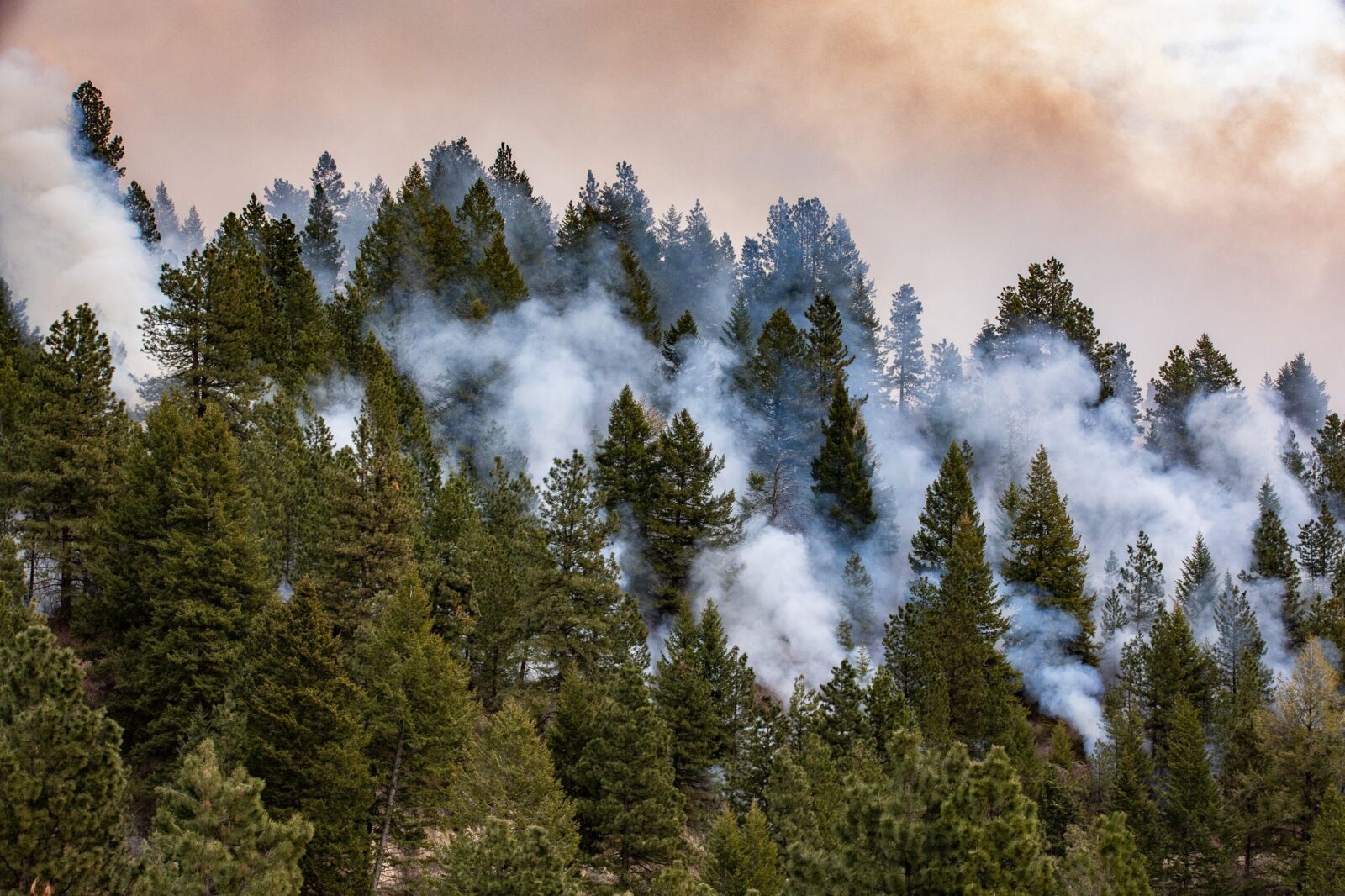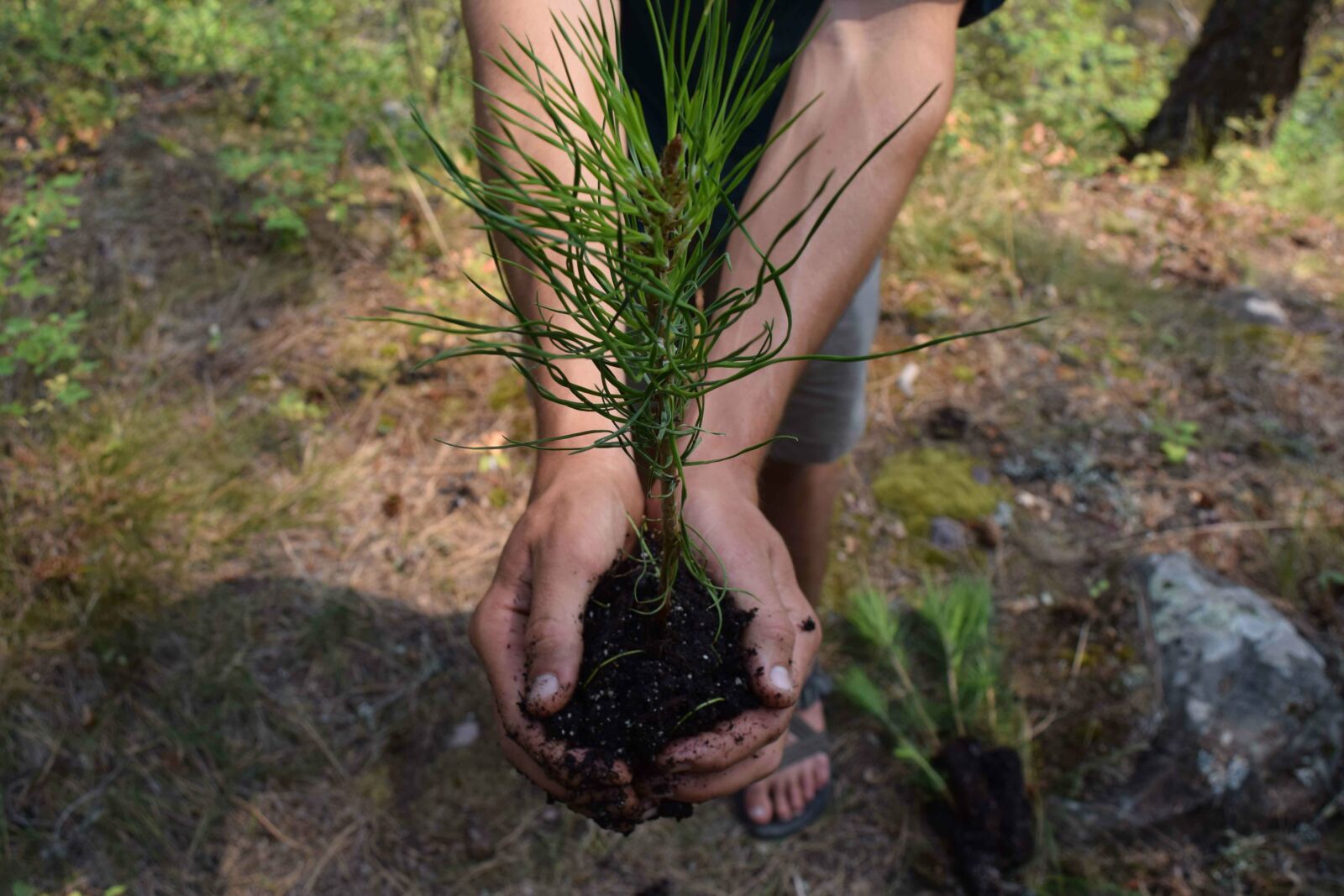Just like humans, trees breathe. But, while humans inhale oxygen and exhale carbon dioxide, trees do the opposite: their leaves pull in carbon dioxide, water, and energy from the sun to turn into sugars that feed the tree. This process, known as photosynthesis, emits oxygen. So, through photosynthesis, trees remove climate-warming carbon dioxide from the atmosphere and help us mitigate the effects of climate change.
In one year, a mature tree can absorb a half a Metric ton of carbon dioxide equivalent. Altogether, forests in the U.S. offset about 16 percent—or three decades worth—of greenhouse gas emissions emitted from cars, trucks, power plants, and other sources in country. In fact, forest ecosystems are the largest land-based carbon sink on Earth.
Carbon dioxide absorbs and radiates heat. Though an essential component of our atmosphere, humans have increased the amount of carbon dioxide in the atmosphere by 47 percent since the beginning of the Industrial Revolution. As a result, our average annual global temperature has risen by 2 degrees, which has, in turn, driven temperature extremes, decreased snow and sea ice cover, intensifying natural disasters, and changing habitat ranges for plants and animals.

Photo by Dave Walsh, courtesy of the U.S. Forest Service
Saving An At-Risk Resource
The security of forests as carbon sink is waning as beetle kill, drought, wildfires, human development, climate change, and other disturbances impact the health and expanse of forested landscapes. For instance, as wildfires burn more intensely and across more acres, the chance that the landscape regrows as a grassland instead of a forest may increase. Since grasslands sequester less carbon dioxide from the atmosphere, our reliable carbon sink that is forests will shrink.
Despite this, a recent USDA Forest Service study found that forest managers have the opportunity to enhance the carbon sequestration capabilities of existing forests by planting trees. According to the study, the federal government currently has the infrastructure to produce and plant about 65 million seedlings per year (though many constraints exist, including funding and capacity), while state and private actors have the capacity to produce and plant about 1.1 billion seedlings per year.
Combined, the 1.2 billion trees planted could sequester between 16 million and 28 million tons of carbon dioxide a year. This equals the amount of energy used to power between 1.8 million and 3.2 million homes in one year.

Photo by the NFF
Reforestation Program
To help achieve these milestones, the National Forest Foundation is planting millions of trees on National Forests across the U.S. The NFF can plant one tree with just $1. And, for every $1 invested by the NFF, the U.S. Forest Service provides $2 of in-kind value in project support and implementation.
When you donate to support our Reforestation Program, you are restoring forests and enhancing the benefits trees provide to our nation’s waterways. Click here to donate today.
Cover photo of Uinta-Wasatch-Cache National Forest by Ashley Tepen.

